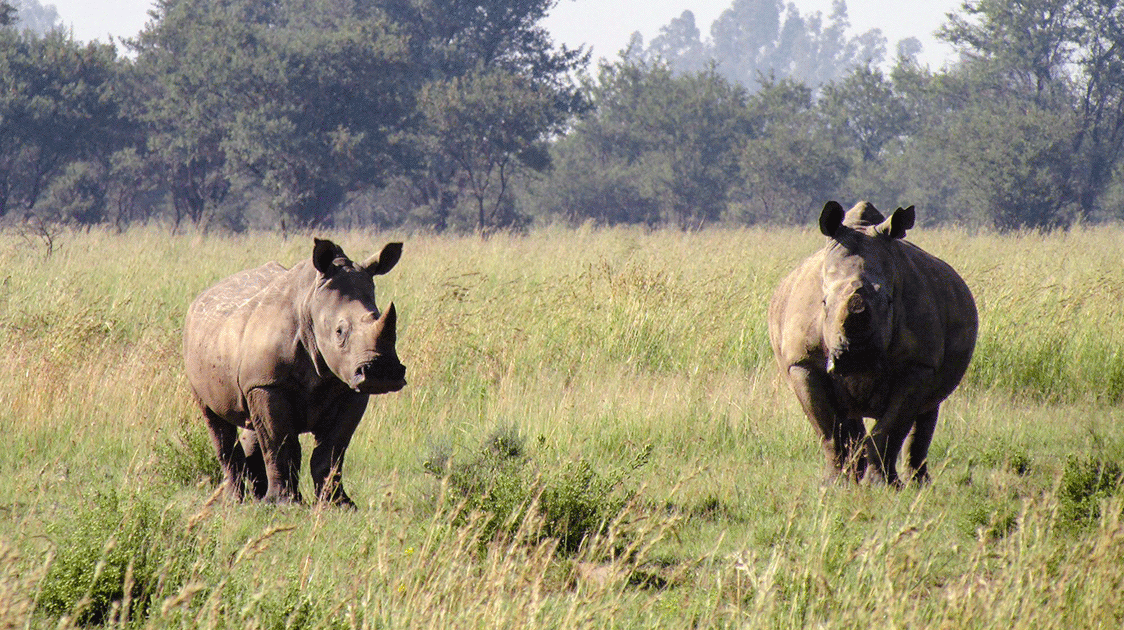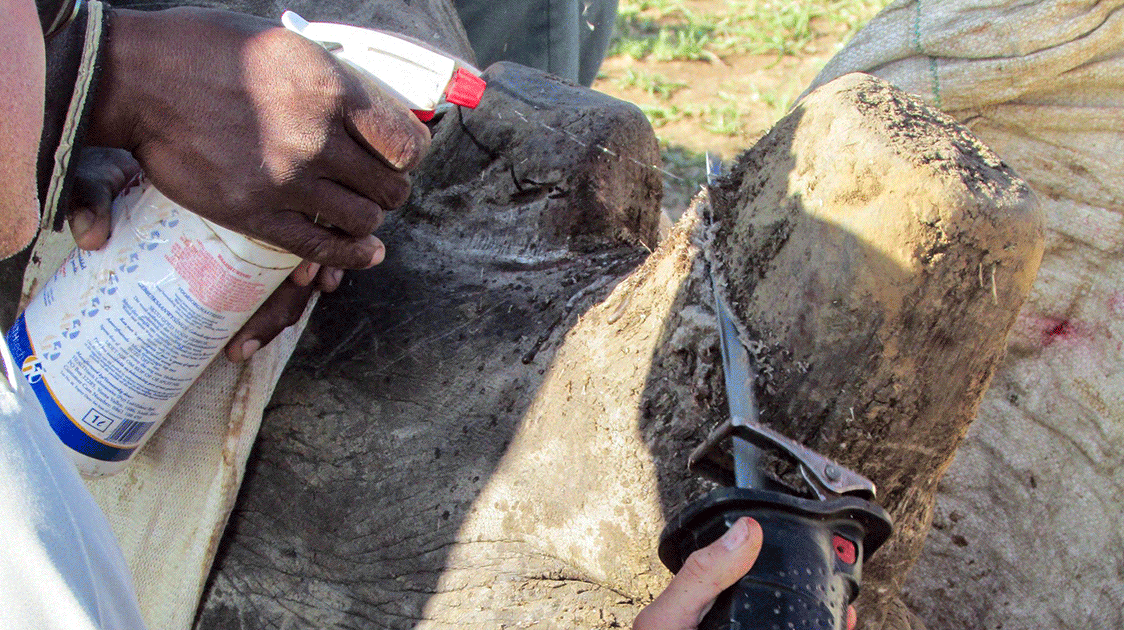Saving Private Rhino

By Bugs Van Heerden
I first visited John Hume at his 8000-hectare ranch in 2014 and have subsequently made two further visits.
When I arrived, John said that two male rhino calves had been born the previous day. A little later, the radio crackled to say that another two male calves had just been born. John proudly showed me his property and explained in detail the inner workings of his breeding project.
Before continuing, one misperception needs to be addressed. Critics have often categorized the ranch as a feedlot and the husbandry as intensive. This is pure nonsense. Although I saw more rhinos in a single day than I will probably see again, they wandered freely, dotted on the plains, and almost every cow had a calf at foot.
During this visit, John confirmed that there were more than 1 600 rhinos on his ranch, making it an average of 5 ha of grazing per animal. Supplementary feeding is provided in the non-growing season, and hay is made on the ranch and used during these periods. Still, in the growing season, no additional rations are necessary.
John was driving the old double cab with his energetic Jack Russells hopping on and off his lap and bouncing around the car. The ranch is divided into several large 400-hectare camps with more than just rhino.

Each one could be likened to Jurassic Park, with a giraffe here, sable over there, eland, buffalo and just about every antelope you can think of appearing from the grass or around the next bend. (Photo-tourists would probably love it, despite the fences). The camps are subdivided to enable rotational grazing.
John's frustration with policies out of his control during our drives was very evident. He said that despite the enormous amount of money he puts into the project and the obvious breeding success he is having, it seems as if everything is set against his project being able to continue. It's simply inconceivable that he is expected to fund this project from his resources while simultaneously being deprived of his ability to generate any significant income.
The most horrendous prospect for John is the looming probability that his funds will run out before legislative change enables him to generate sufficient revenue to allow him to keep going. In this eventuality, it would be difficult to see any future for the project, and all his rhinos would be jeopardized.
He has long claimed that legal trade in rhino horn will save his project and his rhino. Through the same logic, if the trade were legalized, other private rhino owners and the State Parks could benefit from an income enabling them to protect their rhinos.

Let's look at a few facts:
- Rhino horn regrows after it has been cut off. (approx. 1kg per year for bulls and 0.6 kg per year for cows).
- A single bull rhino can produce at least 60kg of horn in its lifetime but if killed by poachers, an average of 7kg.
- The rhino cows may produce less horn, but they should produce 10 or more calves in a lifetime.
- If his ranch is able to continue, the project will double rhino numbers every 8 years.
- South Africa has brought the white rhino back from less than 50 animals, and the trend is now reversed due to the restrictions on marketing its rhino products.
- A combination of intensive anti-poaching measures and extensive rhino ranching has proven to be a highly efficient way of propagating the species.
- The philosophy of pure protectionism and forbidding sustainable use prevents communities involved with rhino populations from developing mutually beneficial incentives.
- Protectionism has, so far, resulted in trade prohibition, but this need not be the case. Legal trade in rhino horn does not call for any rhino's death so they could remain protected.
- Protectionism without legal trade is not proving successful.
- A rhino needs to be worth more alive to its custodians than dead to criminals.
- Since the domestic moratorium on horn sales, 8000 poaching-related rhino deaths have occurred.
- Consumers would probably prefer access to legally acquired authentic products instead of illegal goods.
- Without a legal supply, criminals have free rein to capitalize on the illegal market, driving prices up to astronomic levels and consequently making poaching far more attractive.
- A trade ban deprives resident Africans of legitimate economic opportunities. Security worries and lack of income potential from rhinos have already resulted in their removal from 2 000 sq km of range. Without rapid adoption of legal trade, rhino disappearance from non-formally protected areas will continue to escalate.
- Intense rhino poaching has resulted in the useless deaths of rhinos and people and will have adverse effects that will last for generations. Nature conservation policy has never involved, and should never involve, the killing of people except in extreme circumstances.
- Donor fatigue and compassion fatigue are genuine concerns. The anti-poaching measures of State Parks are heavily reliant upon foreign donors. Legalizing trade would make them self-funding and turn rhinos from liabilities into assets.
Since my first visit in 2014 to meet John Hume, I have become actively involved in conservation work, and with support from some of the old guards from the Natal Parks Board, I feel morally obliged to take up the cause and push for the legal trade in rhino products. It is logical; if we cannot make the changes at CITES, our rhinos' future is bleak.
While driving away from John’s ranch on my last visit, John called to say that two female calves had just been born. This made me contemplate their future and that of the species in Africa.

Comments ()